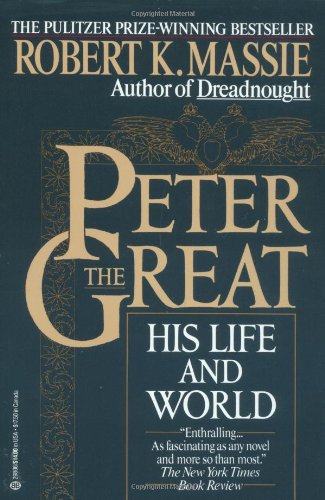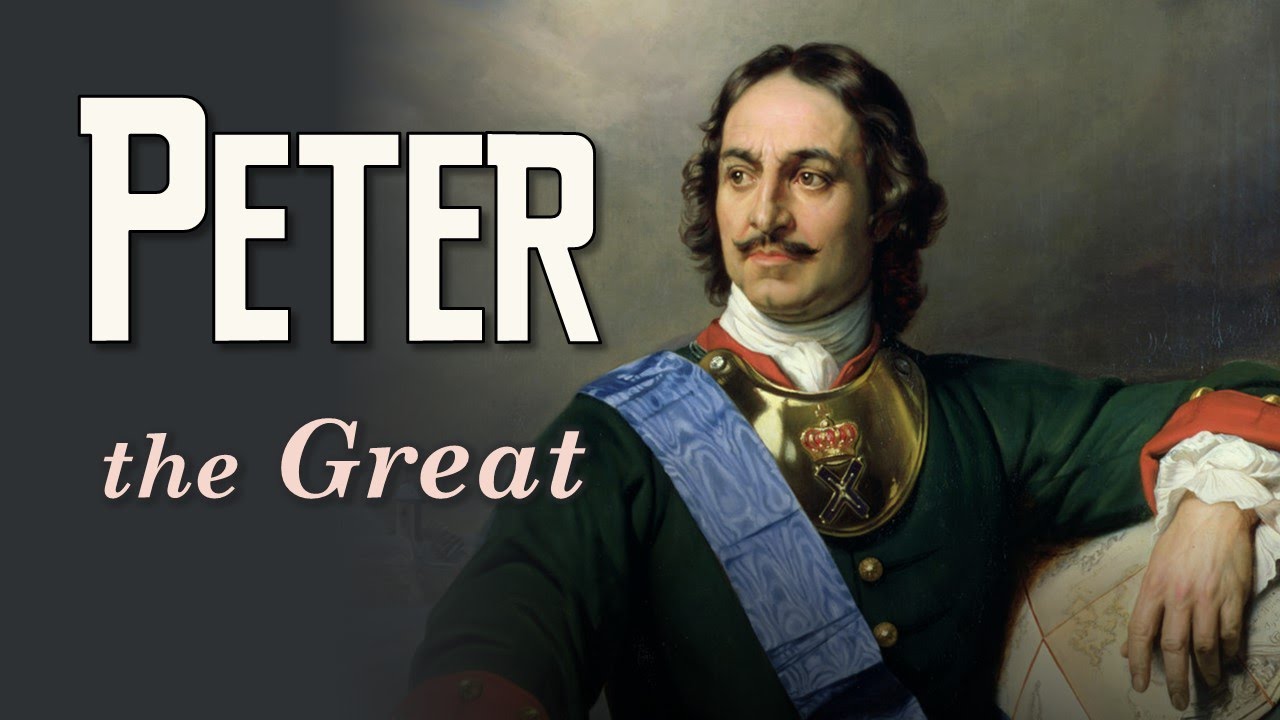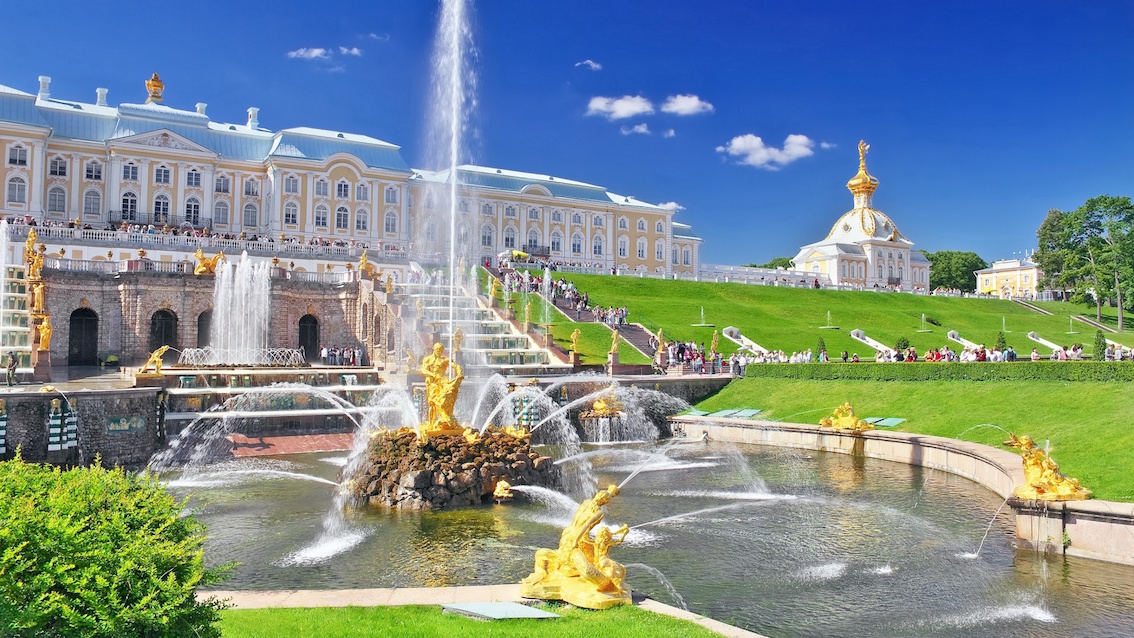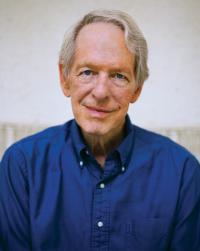The Russia into which Peter (1672-1725) was born was a closed and homogeneous world dominated by an insatiable church. Men wore belted caftans. Women were never seen out of the house and seldom in it. An alcoholic stupor was the goal of many at both the top and bottom of the social order. The Orthodox Church awaited the Advent, demand at least six hours of prayer a day for salvation, and hated all foreigners as agents of satan. This new Rome was surrounded by religious enemies, Lutherans to the north in Sweden, Catholics in the west in Poland, Islam to the south in Turkey, and worst of all the rival Greek orthodox.
The Russian Orthodox Church was in a state of siege. There were very few foreigners in Russia, merchants and traders in Archangel and some craftsmen in Moscow. End of story.

While most of these surrounding foreigners had no interest whatever in Russia, the religious leadership in Russia saw devils under every bed. Russian xenophobia has deep roots.
While Muscovy included vast areas, most of it went its own way. This Russia had no coast on either the Black Sea or the Baltic Sea. The Tatars, clients of the Ottoman, held all of the north coast of the Black Sea; the Baltic was held by Sweden on all three coasts. Most of the Ukraine had been conquered by Poland, including Kiev, a sacred city where the Russian Orthodox religion had began.
When the Ottomans besieged Vienna, Catholic Poland offered to return Kiev to Muscovy, if Russia would attack the Tatars to divert the Ottomans. This was the first opening to the Europe.
Russia had no army but a palace guard and vast pool of manpower, which was pressed into service as a motley and undisciplined and under-armed expeditionary force. This huge mob of 100,000 men was no match for either the geography or the Tatars. After several disasters, the Russians declared victory and a remnant of the force returned to Moscow, but the Poles wanted more than the assertion of victory and, finally, a second even larger and more ramshackle force went, reluctantly, with a similar result. Kiev remained Polish.
These debacles were crucial in Russia, but more importantly, they represent the first time a Russian regime cooperated with Europeans, and it was the first conflict with the Turks. The contact with Europe was sour and remains so today and the animosity with the Turks continues today.
The Romanovs had ruled Muscovy for two hundred years when Peter was born. His father Alexander was a sensible man who resisted some of the more lunatic demands of the Patriarch of the Orthodox Church. He had three sons, Fedor, Ivan, and Peter with two sucessive wives. Fedor and Ivan were born of the first wife and Fedor was raised to be Tsar. Peter’s mother was a second wife, and as third in line Peter was an afterthought. Then Alexander died unexpectedly and a dynastic struggle ensured between the families of the two wives about status and place at court. (The first wive had died but here many relatives were still in court.) At one point the struggle became a massacre. Most members of the family of Peter’s mother were murdered, some before his eyes when he was nine years old, though his mother survived. This massacre might explain some of Peter’s aversion to Moscow ever after.
The details are many and fascinating: Fedor died as did Ivan without heirs, and Peter was Tsar.
From about six years of age Peter lived in a village outside of Moscow where he played soldiers with a company of boys. He continued to this on an ever increasing scale. There he developed an aptitude for physical labor and showed a willingness to learn from others, from carpenters and soldiers who trained his boy-army. Near the river there he came across the keel of a sea-going vessel in a warehouse, perhaps stored there for the timbers to be reused for another purpose. This discovery kindled his lifelong obsession with the sea. Peter found chandlers and carpenters to rebuild the ship. These men were Dutch and this was his first contact with Europeans and he liked them for what he could learn from them and what they told him about the world beyond.
Peter’s tenure as Tsar is dated from age ten when he was ordained Tsar, though Ivan and his sister, Sophia, ruled, while he played in the country. When Ivan died and Sophia was displaced by a resurgence of Peter’s mother’s family, when he was seventeen, he continued to live in the countryside. There was no instant conversion like Prince Hal in Shakespeare.

One of the arresting figures among the vast cast of this epic is Sophia, who ruled as Regent for six years. The first woman to do in Russia. Since Ivan was ill, crippled, and perhaps mentally deficient, she was Tsar in all but name during his tenure. In the Arsenal in the Kremlin in Moscow we saw a throne where the two boys – Ivan and Peter – sat as co-Tsars in front of a screen with a window. Sophia sat behind the screen listening and told Ivan and Peter what to do and say.
In a world where women were never seen and often beaten to death, she was exceptional indeed.
As a boy Peter’s father gave him wooden toy wagons and boats and he took them apart and reassembled them. When he could not get them back together he went to the palace carpenters for help. He was free to do so because he was the third son. The heir-apparent, Fedor, would not have been permitted to defer to carpenters. This willingness to ask and accept help stayed with him, as did his fascination with how things work. In the boy we see the man.
While his half-brothers Fedor and Ivan were sickly, Peter was a picture of rude good health and a big picture at that. He was always big for his age. He grew to be six feet and eight inches tall, though he was relatively thin. That make his more than a head taller than all of his contemporaries. His size may have been a genetic defect.
In his childhood and adolescence he was modest. With his boy army of three hundred in the village he let others be officers while he served in the ranks. Thus in drawings and descriptions of these games he wears a soldier’s uniform in the ranks, while others were in the braid of officers based on their abilities. There is no doubt Peter ran the show, planning during the night the activities for the next day, but in the execution he deferred to others. Again this is a freedom Fedor would never have had. The Tsar could not defer to others. Here in seed is Peter’s lifelong belief that merit not blood should decide rank.
Though Fedor, Ivan, and Peter seldom mixed when they did they always seems to get along with each other. But Peter came to hate Sophia for the murder of his maternal family.
When Fedor died, the diminished Ivan became Tsar. What a contrast between the great strapping boy Peter and the lame, halt, and partly blind Ivan.
Much follows this foundation in the nearly one thousand pages of this tome. As much as a third of it concerns the twenty year Great Northern War with Sweden, then an imperial power occupying the entire Baltic Coast, Finland, Norway, Estonia, Latvia, and Lithuanian, and some of what became Prussia and Poland. It was a great power to rival France.
Peter’s ambition for the sea focused on the Baltic and Black Seas. The latter brought conflict with the Ottoman Empire and many subsequent wars, while the former meant conflict with Sweden.
It is uncanny how the Swedish invasion of Russia prefigured that of Napoleon and later Hitler. Peter retreated deeper and deeper into the vast Russian steppes, the Swedish supply line lengthened, and the Russians applied the scorched earth practice to deny supplies and succour to the Swedes, a 150 mile zone of exclusion in which everything was removed or destroyed ahead of the advancing Swedes.
When the Swedish supply line finally broke, the Swedes had no choice but to drive on and the decisive battle occurred at Poltava, much venerated in the palace art we saw in St Petersburg. Even with the Swedes diminished, exhausted, malnourished, and frozen, it was still a near-run fight, but the Russian victory was complete.
The reckless Swedish king, Charles XII, went south into exile with the Russian’s other enemy, the Ottomans. Charles was a character equal to Peter, but in these pages he is one-dimensional, a warrior king, always away at war. Yet in his absence Sweden rolled on and honoured his endless demands for more money and men. This stability back home in Stockholm is curious and I may look for a biography of this giant.
Peter’s efforts to convert Russia, starting with St Petersburg, into a European city from the top down never quite worked. As long as he decreed it, it was done, but when he turned away, then ancient Muscovy reappeared. At best what he got was outward compliance. In St Petersburg there was a tiny European oriented elite around Peter, but elsewhere Muscovy remained, tamed, perhaps, but not converted.
Some of Russian history is a pendulum swing from Europe to Muscovy. One tsar would push one way and the next would in reaction push the other way. The swinging continues.
Peter’s hobby was carpentry at which he worked all of his life. One well-travelled French diplomat commented Peter was only monarch in Europe with callouses on his hands.
He married a commoner and after the death of his son, Peter gradually prepared her to be his successor. The son died at Peter’s order; Peter thought the boy was conspiring with Austrians to depose himself and turn back the clock to Muscovy. This episode brought out a paranoia in Peter that remained. He had many other supposed conspirators murdered.
There is much to like about this giant, but he is also foreign from us. The enlightenment had not made it to Russia and he had none of the sympathy and compassion it entailed, still less the emancipatory rhetoric of the King James Bible. He never gave a thought to the slaves, the serfs. In his time about five percent of the population owned the other ninety-five percent. St Petersburg was built in good part on their dead bodies. Slave labour is another recurrent feature of Russian history.
He relied almost exclusively on decrees to convert St Petersburg and with it Russia to a large version of Amsterdam. He invested nothing in education, communication, or persuasion for either elite or mass. When he wanted to promote industry he enslaved serfs to factory work in an odd and unsuccessful combination of European and Russian practices. Again this seems another continuity in Russian history. Adoption of a European practice with a Russian twist.
While he built the magnificent palace Peterhof to outshine Versailles, and he may have succeeded, he himself did not live it, but rather in an out building on the shore where he occupied two rooms with low ceilings and no decoration of any kind.

There is nothing of Muscovy in Peterhof. He had none of the appetite for riches that later Russian Tsars and Tsarinas had in excess.
Peter wore plain clothes, not jewels or accoutrements, except on state occasions, which he tried to shun. When the pressure of work got him down, he went to the workshop to do carpentry.
He had a mild form of epilepsy and when he had attacks the only person he responded to was his second wife. Courtiers soon learned to send for her when the Tsar was getting in a bad mood which might precipitate an attack.
When he died his wife succeeded him, and thereafter Russia was ruled by other women for many years, until a later Tsar eradicated that possibility. Here they are:
Sophia as regent, 1682-1686
Catherine I, Peter’s widow, as Empress, 1725-1727
Anna, 1730-1749
Elizabeth, 1749-1762
Catherine II (the Great), 1762-1796, who was neither a Romanov nor a Russia!
 Robert Massie
Robert Massie
The book is lucid, exact, intriguing, discerning, and well judged. The prose is elegant. Altogether it is a pleasure to read and it is a story that takes reading, there is a lot of detail. He has another on Catherine the Great, but I have had my fill of Russia and Russians for now.
Skip to content
